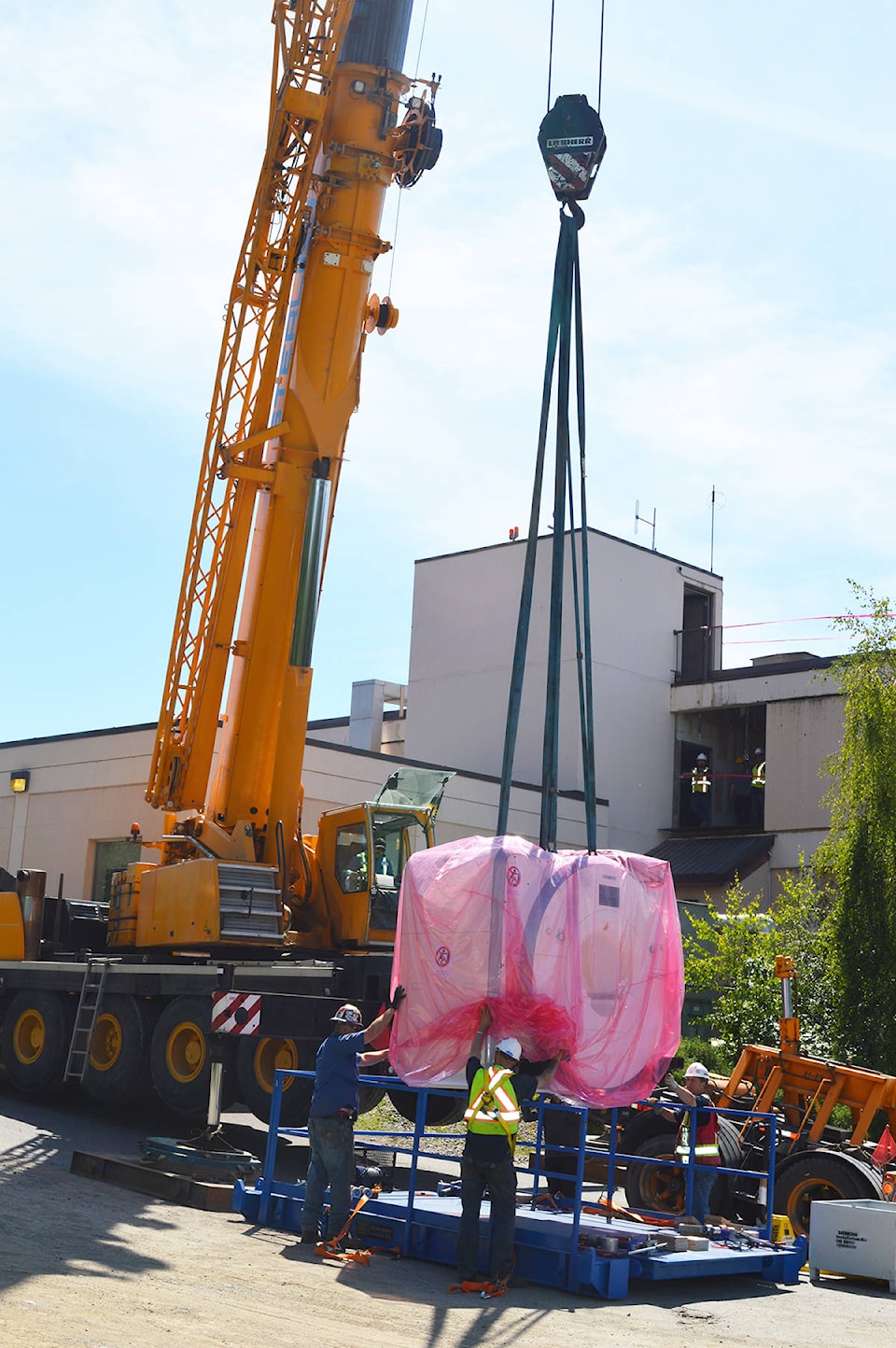A new CT machine at Mills Memorial Hospital in Terrace expected later this year and a first-ever one to be placed at Bulkley Valley District Hospital in Smithers, also this year, will continue to change the landscape of diagnostic services for the region, says a senior Northern Health official.
The new CT machine for Mills is a welcome replacement for a 2006 model now obsolete and needs to be replaced while the one for Smithers means patients in that region will no longer have to travel here, says Dr. Jaco Fourie, the health authority’s northwest medical director.
“The CT here is on its last legs,” he said of the one in Terrace.
And although Terrace is going to get a badly-needed $380 million replacement for Mills with accompanying patient services improvements, the CT machines are an indication that services for the region won’t be concentrated exclusively at the new hospital.
“This is not a hub and spoke model. What this is is a community of services, utilizing the services at the other hospitals,” said Fourie in describing the work underway.
Diagnostic imaging for northern residents was also boosted by the installation of an MRI machine in Terrace in 2017.
READ MORE: CT machine approved for Smithers
It’s a far different situation now than existed just several years ago when the work of one radiologist stationed at Mills was brought into question, prompting a wholesale examination of radiology services — and who provides them — not only in Terrace but elsewhere in B.C.
That report, commissioned by the provincial health ministry, in the matter of Dr. Claude Vezina, recruited to Mills Memorial in Oct. 2016, followed a 10 per cent discrepancy rate, double the accepted norm, found in CT, x-ray and ultrasound image interpretations.
Vezina went on voluntary leave in Jan. 2017 and, according to Northern Health, his privileges were “terminated” in late 2017.
The provincial report looked into all aspects of training, recruiting and quality assurance here and elsewhere, often finding gaps.
“The [Terrace] incident highlights multiple failures to effectively share information, between physician leaders themselves, and between physician leaders and regulators — both medical affairs departments in their role as the physician-regulatory part of the health authority and also the College of Physicians and Surgeons of B.C. and regulatory colleges in other jurisdictions,” wrote report author Dr. Martin Wale of the B.C. Medical Quality Initiative which works to improve health care in the province.
Since then much has changed, said Fourie, thanks to a culture put in place which emphasizes ongoing peer review and a collegial atmosphere in which radiologists can ask questions about each other’s work.
“We now have a rock solid system — reference checking, quality assurance,” he said. “It’s a real solid process.”
READ MORE: Terrace MRI hits milestone
Fourie also noted that the one radiologist at Mills, Dr. Elliot Rapp, has vastly reduced the wait time for scan interpretations required by physicians.
“Under his leadership we now have images the same day,” said Fourie in adding that new technology which now produces digital images, which can be viewed anywhere in the world, instead of ones on film has helped drive the improvements.
A group of radiologists based in Vancouver has also been hired, meaning that interpretations are available consistently and constantly, said Fourie.
“I can tell you this has been tremendously successful. Our radiology has never been this robust. It’s beyond anything we’ve ever had before.”
Having that kind of coverage means that although recruitment of a second radiologist in Terrace is ongoing, having one here isn’t absolutely crucial, said Fourie.
“Ultimately the goal is to get a radiologist in Smithers. That person could be here first and then basically progress to Smithers and from there, could cover both sites,” he said.
The CT machine for Smithers is being financed through an extensive campaign by the Bulkley Valley Health Care and Hospital Foundation (which included a substantial donation by former Telkwa mayor Fritz Pfieffer), by the provincial government and the Northwest Regional Hospital District.
The provincial government and Northern Health are financing the new CT machine in Terrace.
